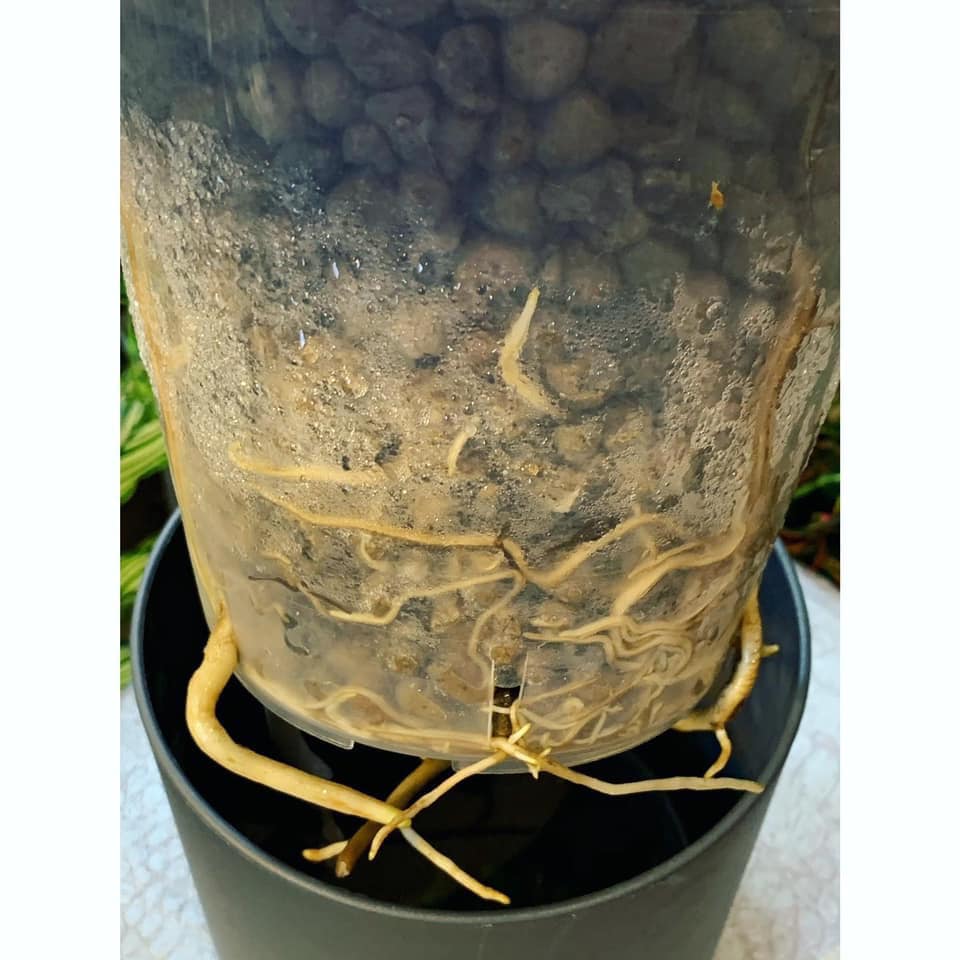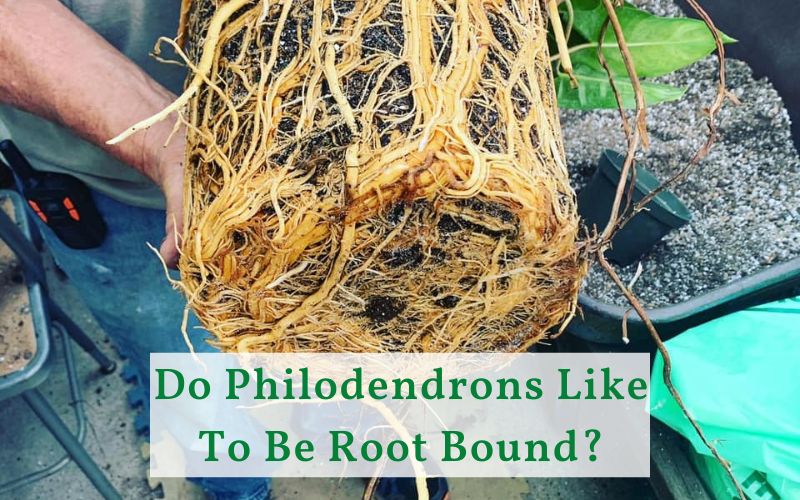Are you wondering, “Do philodendrons like to be root bound?” Houseplant lovers are always chatting about this, and there’s a good reason why. Philodendrons are popular houseplants and are easy to care for, and knowing what their roots are like is key to keeping them happy and healthy. In this thorough guide, we’ll find out if philodendrons like being root bound, look into the right care, and give you some handy tips to make sure your plants do well. Keep reading and you’ll be a whiz at caring for philodendrons!
What Does Root Bound Mean and How Does It Affect Your Philodendron?
When plants get big in pots, their roots can get too big for space, leading to what’s called “root bound.” This occurs when the expanding roots reach the limits of their container and begin to search for a way out, often poking through drainage holes or overflowing over the edge of the pot. This can have some negative effects on your Philodendron’s health and growth, including stress, slowed growth, and generally poorer health because it’s not getting enough water, nutrients, or airflow.
Do Philodendrons Like to Be Root Bound?
The answer is both yes and no, depending on the circumstances. While philodendrons are adaptable and can cope with being pot-bound to some degree, they might not necessarily like it. When root-bound, some philodendrons might get stressed, stop growing as much, and generally become less healthy. However, other philodendrons can do really well a bit root-bound.
Some types of philodendrons, such as the Philodendron bipinnatifidum, can do quite well when they’re a bit root-bound. That’s because these types naturally don’t grow very big and don’t need as much space as some other types of philodendrons.
But, not all philodendrons are happy being root-bound. For instance, Philodendron Xanadu prefers having more room. It grows more openly, and if you keep it in a pot that’s too small, the roots can get too squashed up, and the plant won’t be very happy.
Let’s look at how a few different types of philodendrons handle being root-bound:
| Type of Philodendron | Likes Being Root-bound? |
|---|---|
| Philodendron bipinnatifidum | Yep, it does well a bit root-bound |
| Philodendron Xanadu | No, it prefers more space |
| Philodendron selloum | It can handle it but grows better with regular repotting |
| Philodendron Prince of Orange | It can handle it, but will eventually outgrow its pot |
| Philodendron micans | It can handle it but grows better with regular repotting |
As you can see, there is a wide range of root-bound tolerance among different philodendron species. If you’re not sure whether your philodendron is okay with being root-bound, it’s safer to repot it into a slightly bigger pot.
Signs a philodendron is root-bound
While a slightly root-bound state can help philodendrons stay compact, it does not necessarily improve their nutrient absorption. If your philodendron is showing signs of stress or stunted growth, you may need to repot it into a slightly larger container every few years.
Some common signs of a root-bound philodendron include:
- The leaves are starting to yellow or brown.
- The plant is growing more slowly than usual.
- The roots are starting to grow out of the drainage holes in the pot.
If you notice any of these signs, it’s a good idea to repot your philodendron into a slightly larger pot.
However, if your philodendron doesn’t show any signs of being affected, it may not need repotting. This will provide your tree with optimal conditions to grow lush, vibrant foliage and maintain its overall health.
How Often to repot a Philodendron?
As a plant lover, caring for your philodendron requires understanding its repotting needs. Usually, you should repot every two to three years, or sooner if you see signs it’s root-bound, like roots poking out of the drainage holes. How often you need to do this depends on stuff like how fast it’s growing, its size, and the kind of potting mix you’re using. Repotting on time makes sure your philodendron has space to grow, keeps the soil airy and full of nutrients, and helps it keep its bright green color. Stick to this schedule to keep your philodendron in top shape.
Related: Best Pot For Philodendron: Perfect Choosing For Optimal Growth
How Do You Know When Philodendron Needs a New Pot?
One problem many plant lovers run into is figuring out when to repot their plants. Too many roots can slow growth down, and in some cases, stop your philodendron from blooming. Spotting the signs that your philodendron needs a new pot is super important for its health.
With philodendrons, there are a few things that might tell you it’s time for a bigger pot:
- Roots emerging from drainage holes: If you see roots poking out of the drainage holes in the pot, that’s a sure sign your philodendron needs more room for its roots.
- Increased watering frequency: Watering it more often: If you’re watering your philodendron more than usual, it could be a sign that the roots need more room to soak up water.
- Outgrown pot: Check out how big your philodendron is: If it looks like it’s gotten too big for its current pot, it’s time for a bigger one.
- Time since last repotting: Remember when you last repotted your tree philodendron or when you got it: A healthy plant usually needs a bigger pot or a root trim every 18 months to two years

Should I Repot My Philodendron?
Figuring out whether to repot a philodendron can be tricky for a lot of houseplant lovers. There are a few things to think about when deciding, and understanding these can help keep your plant healthy and growing.
- Frequency: You should usually repot your philodendron every 2-3 years, even if it looks fine. Over time, the soil gets worse at holding onto nutrients and gets more acidic. Repotting gives it fresh, nutrient-rich soil, helping it grow better and stay healthy.
- Signs of distress: If you see your philodendron isn’t growing as fast or it’s root-bound and stressed, it’s time to repot. Watch your plant and think about repotting when it’s gotten too big for its pot.
- Best time to repot: The best time to repot your philodendron is when it’s growing, so in the summer or spring. Repotting in the winter, when the plant isn’t growing, can shock the philodendron and might stop it from growing. To keep stress low and make sure repotting goes well, do it when the plant is growing.
In conclusion, figuring out if philodendrons like to be root bound is super important for looking after your plant properly. This thorough guide from FamiPlants has tackled this question, looking at all the things that can affect how a philodendron grows and its general health. By following these tips and advice, you can make sure your philodendron does really well and adds a bit of lush, green beauty to your place. So, do philodendrons like to be root bound? It’s all about getting the balance right and giving your plant the care it needs. Happy planting from FamiPlants!

